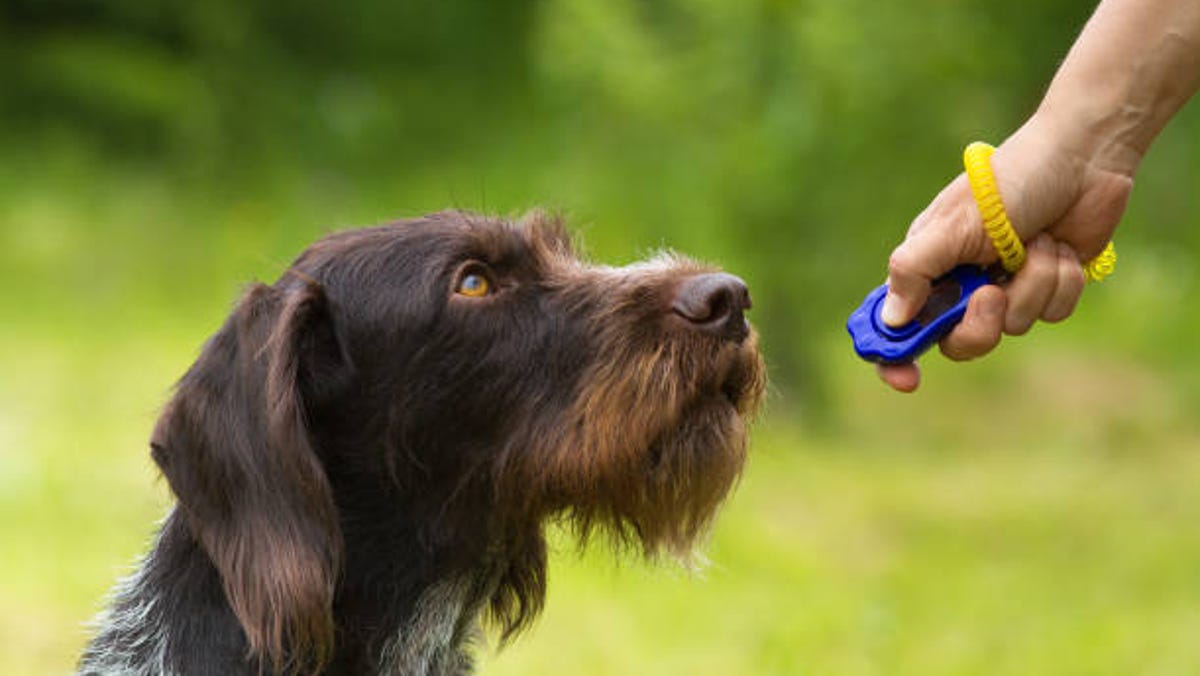ALL ABOUT DOGS: What is a 'clicker' and how can it help with obedience training? - Sarasota Herald-Tribune

Question: We just got a puppy and I have a friend who swears by something called "clicker training." What is clicker training and is it worth pursuing with my dog?
Answer: The "clicker" used in clicker training is a little strip of metal inside a handheld plastic box that clicks when you press it with your thumb. When I was a kid, a toy like this usually showed up around Halloween as a noisemaker.
The way the training works is, when your dog complies with a command, you click and give a treat. Your dog starts to associate the click as something positive. Do I think it could be an effective way to train your dog? Perhaps, sure. And I know others who swear by it as well, but clicker training has always struck me as a superfluous albeit ingenious method of dog training. Whoever came up with the idea of clicker training was creative, I'll give them that.
Quite simply, dogs figure out patterns, and using this method, Fluffy figures out the corollary between her compliance and the click. My problem with this technique has always been threefold. First, adding an extra appliance to any training procedure never seems like a good idea to me. Second, clickers are obtrusive. They make noise ... which in turn garners attention from anyone nearby. In other words, they're not discreet when it comes to communicating with your dog, and I don't like that aspect at all. And third, you mean to tell me I always have to locate this thing, or have it in my pocket before I can work my dog? All of this seems like a colossal hassle to me when we already have a great tool to communicate with Fluffy: Our voice.
One amazing aspect about the domestic dog is even though they're basically nonverbal, they essentially take to learning a foreign language. Not only that, but they learn the nuances of our tone of voice. This is important because understanding how to modulate your tone of voice in different situations is extremely valuable when it comes to communicating with your dog.
A few mistakes I see on a regular basis here are, first of all, repeating cues. We tell Fluffy to "sit" over and over and then maybe she does ... or not. But rest assured it's not because she doesn't know what you mean. She's simply blowing you off. What's the solution? The next word out of your mouth when your dog doesn't respond to a command, should be "No!" Nine times out of 10, your dog will comply when you correct them with a "No!"
But we have this habit to repeat commands over and over ad infinitum. In turn, this teaches Fluffy she doesn't have to do what you say the first time you say it.
The second most common mistake I see dog owners commit is to use their dog's name as a correction. Your dog gets into something she's not supposed to, and instead of giving her a command she's learned over time (like "get outta there!") our tendency is to say "Fluffy! … Fluffy … FLUFFY!" Ultimately this works against us because we want our dog to love her name, not think her name sometimes means "I'm in trouble."
Another common mistake is using an "I mean business" tone of voice when they tell their dog to do something. And while I know it can be counterintuitive to use an upbeat, encouraging tone, that's absolutely what you should do. It's like an enticement as opposed to a correction. Which that stern tone of voice absolutely conveys.
In short, if you can master using your tone of voice properly that would render a clicker obsolete.
Originally from Louisiana, Gregg Flowers is a local dog trainer who "teaches dogs and trains people." Contact him at dogteacher7@aol.com or dogsbestfriendflorida.com.



Comments
Post a Comment